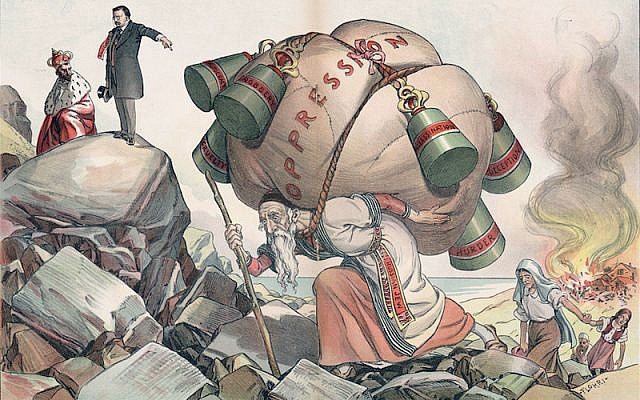1903 Kishnev Pogrom

Cartoon about Anti Semitism
On Easter Sunday 1903, a blood libel-incited pogrom took place in Kishnev, Russia. Dozens of Jews were killed and over 500 injured.
In February 1903, a youth named Michael Rybalenko was killed in Dabossary, a town near Kishnev, in Russia. Although it was later proven that Rybalenko was killed by his uncle, a rumor spread that he had been killed by Jews — purportedly to use his blood for Passover matzah. This vicious and infamous blood libel, one of the most frequently recurring antiseptic tropes in Jewish history, was exacerbated by the local government-funded newspaper, Bessarabetz, which incited calls for the execution of Russian Jews.
On Easter Eve, a rumor was spread that Jews had killed a Christian servant girl. On Easter Sunday, April 6, 1903, a mob began attacking Jewish homes and shops in Kishnev. The rioting lasted three days, until Russian troops intervened. Some 47 Jews were killed and over 500 were wounded. The Kishnev pogrom — the first pogrom in the 20th century — underscored the vulnerability of the Jewish people in Europe, and was simultaneously a catalyst for the establishment of a Jewish defense organization in Eastern Europe, and for the continuing growth of the Zionist movement.
 >
>